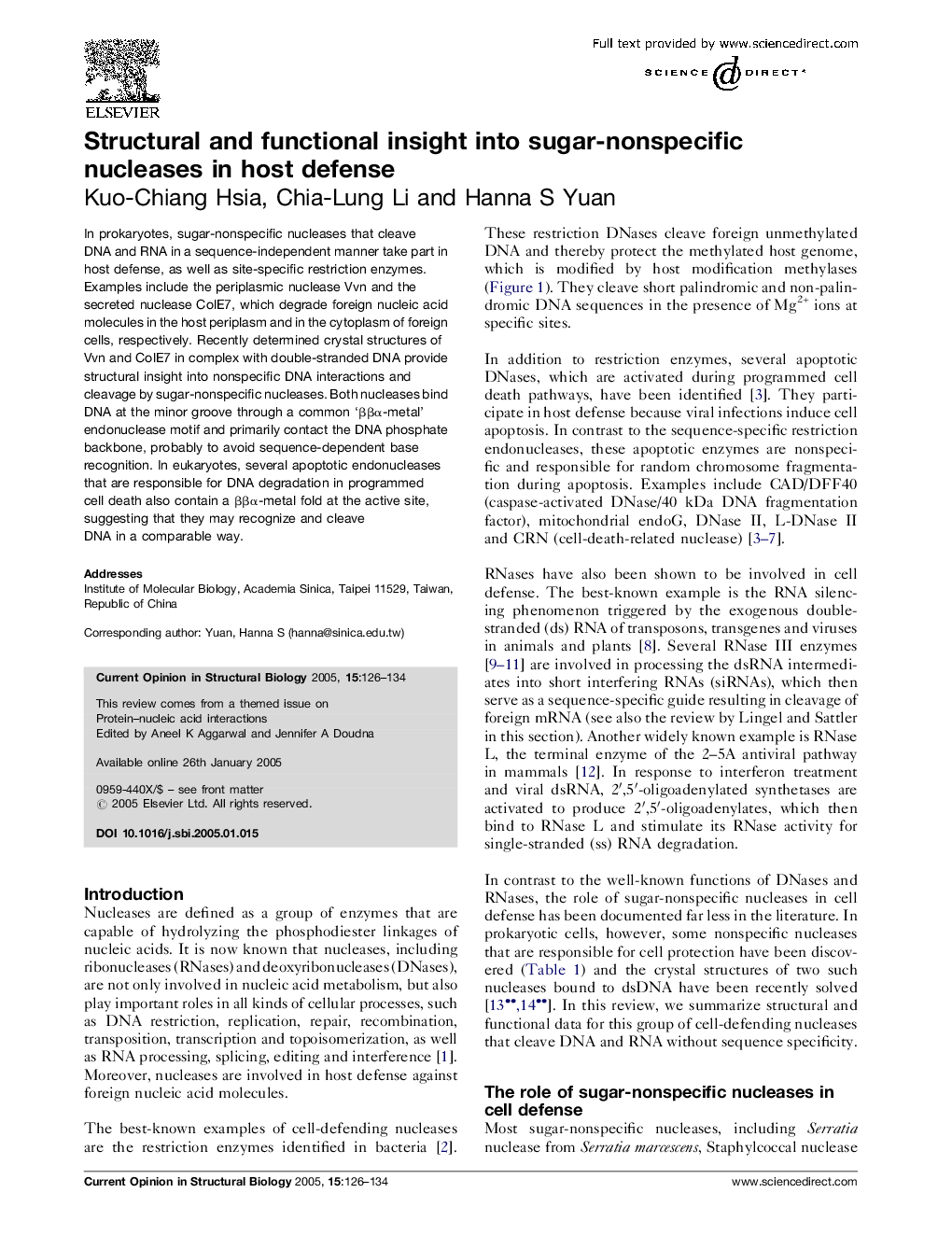| Article ID | Journal | Published Year | Pages | File Type |
|---|---|---|---|---|
| 10822892 | Current Opinion in Structural Biology | 2005 | 9 Pages |
Abstract
In prokaryotes, sugar-nonspecific nucleases that cleave DNA and RNA in a sequence-independent manner take part in host defense, as well as site-specific restriction enzymes. Examples include the periplasmic nuclease Vvn and the secreted nuclease ColE7, which degrade foreign nucleic acid molecules in the host periplasm and in the cytoplasm of foreign cells, respectively. Recently determined crystal structures of Vvn and ColE7 in complex with double-stranded DNA provide structural insight into nonspecific DNA interactions and cleavage by sugar-nonspecific nucleases. Both nucleases bind DNA at the minor groove through a common 'ββα-metal' endonuclease motif and primarily contact the DNA phosphate backbone, probably to avoid sequence-dependent base recognition. In eukaryotes, several apoptotic endonucleases that are responsible for DNA degradation in programmed cell death also contain a ββα-metal fold at the active site, suggesting that they may recognize and cleave DNA in a comparable way.
Related Topics
Life Sciences
Biochemistry, Genetics and Molecular Biology
Biochemistry
Authors
Kuo-Chiang Hsia, Chia-Lung Li, Hanna S Yuan,
